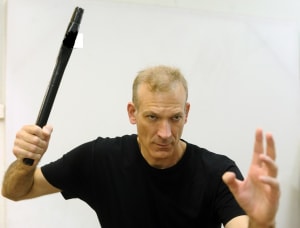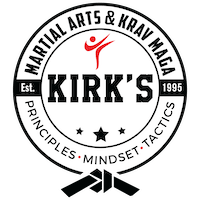
Hi to all,
In the following posts I’m about to discuss some aspects concerning Israeli combat disciplines in general and, Krav-Maga specifically. Hope you’ll enjoy it.
'Krav-Maga' is a term in Hebrew, composed of two words; 'Krav', which means 'Combat', and 'Maga', which means 'Contact'. So, the literal translation of the term 'Krav-Maga' is 'Contact-Combat'.
This term is widely used to describe the Israeli authentic combat system, however, there is more than one style of Krav-Maga. Actually Krav-Maga may be practiced in three different forms:
1. As a martial art – in this form the belt (or rank) system is being used, sometimes training will require a traditional or adapted Gi. There will be a wide variety of techniques, usually in correlation to the number of belts/ranks in use.
2. As a hand-to-hand combat method for security personal – in this form of training, objectives and execution vary, according to the specific characteristics of the training- body. I.e. police will train different from the army, and detectives different from SWAT.
3. As a self-defense method for civilians.
It is clear that each of the above may be interpreted differently, and that it is probably one of the reasons why variation in Krav-Maga training is so vast.
Another aspect which might make things even vaguer, is that when looking at the term 'Krav-Maga' purely from a linguistic point of view, one may suggest that all forms of 'hand-to-hand contact regimens' such as Judo, Jujitsu, and Karate may be counted as a form of Krav-Maga. because they are all forms of contact combat.
By now, you clearly comprehend that the name Krav-Maga may be manipulated and interpreted quiet freely, to a level it has very little in common with the original form.
In order to understand more about the original essence of Krav-Maga, several points should be discussed. In this post I would like to refer to a factor which is crucial in hand-to-hand combat; response time. Response time is the sum of reaction time plus movement time.
When an athlete or a combatant needs to react, the more options he has to choose from, the slower his response will be. This is an outcome of the time required to consider and make a decision between alternatives. This point has been discussed in scientific literature.1
So teaching a Krav-Maga practitioner, several options for dealing with the exact same threat, will slow his response time. Think about it, if you teach a student 3 ways of disarming the same gun threat, you slow him down. Teach him one option, he will respond faster.
At this point the advocates to this fact will say “yes but if the gun is more to the left you need to know another option” or “If I train a lot it want effect the reaction time”. Sorry guys, whenever there is more than one option, a decision should be made, and decisions consume time.
In about 1945, a book named ‘Judo Shimushi’ was published in Israel; this book gathered the hand-to-hand combat information of the time. In the first page, four principles were defined, one of them says: “Do not teach techniques, teach principles. The student should be familiar with the basic principles and technical fundamentals, so he will be able to adapt to the realistic conditioning of combat. Therefore, do not teach him refined and detailed exercises, because this form of teaching will limit his ability and will narrow his thought.”
According to the above, I would like to suggest that the syllabus of Krav-Maga when practiced as a martial art should be narrow, with relatively small number of techniques so reaction time and the ability to adapt to realistic combat will not be compromised.
It is also important to note that if not practiced regularly, response time increases. So, in order to maintain high level of performance, Krav-Maga training should be continued. Practicing Krav-Maga as a martial art, gives the option to train regularly for long periods of time and therefore, (if the syllabus is structured correctly), it will assist the combatant to maintain high performance abilities.
Stay Safe!
Guy Mor
1. tps://www.brianmac.co.uk/reaction.htm#ref

